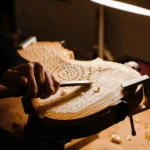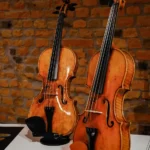Violin Playing: Top Advice from the Experts
Back to BlogIt’s no secret that becoming a great player takes time, patience, and effort. Some other things can also help you develop your abilities as a musician beyond violin playing and practice. If you love the violin and are a worried player, caring for your instrument is of the utmost importance. And, of course can help you take out the best of your violin.
To get the most out of your instrument, you should take good care of it—whether you’re planning on selling it for a profit or just want to enjoy playing for many more years. For instrument collectors, musicians, and fine instrument dealers, taking good care of a violin or other stringed instrument requires some effort. Following these suggestions will help you get the most out of your musical instruments.
The Experts’ Advice
Your instrument and its accessories deserve proper protection. A high-quality instrument case will help a lot to avoid scratches and protect it from dust, and it is an essential tailor-made cushion for your instrument. The violin market has plenty of cases and bags for you to choose from. These high-quality carriers protect your violin and its accessories during transit. You can find some cases that have compartments or pockets, making it easier to store your items.
- Violin accessories have been designed to help musicians develop their musical skills and make violin playing easier. The violin fittings set allows players to learn new skills while polishing old techniques during practice.
- The violin bridge and soundpost are important to a violin’s overall sound—you don’t need to change them frequently, but a few adjustments with your luthier will make your violin sound new!
- Always check the bridge’s angle for a 90º angle with the table. This can be done by supporting a thin, straight bookmark next to the bridge and checking for a perfect ninety.
- A violin’s tailpiece is also an important part of the instrument. It controls the quality of the sound and can be adjusted to fix any errors in the sound or vibrations. By adjusting a violin’s tailpiece, you can play the right notes to create perfect harmony for your tune.
- The violin setup is responsible for closing the violin construction. The quality of this component can make a major difference in your playing; high-quality fittings can be the turning point here. Not only will your violin sound better, but it will also be easier to play if it is well set up.
A check-up is necessary
It is always a good idea to have your instrument examined by a luthier. Just like you visit your doctor, take your instrument to a violin maker or luthier to keep it in good working order and to have it properly cleaned and maintained.
Daily Care
After every practice, use a dry flannel to sweep away the sweat clinging to your violin. This prevents the rosin from bonding with the varnish and sweeps sweat that can sometimes be released while playing.
String cleaning is equally important! Rub the string with a cloth until it warms up. Oxidation occurs when sweat from your fingers penetrates the strings, leaving them dull and lifeless.
The weather
The humidity and temperature levels profoundly affect your violin and can cause irreparable damage if proper care is not taken. It’s important, then, that you remain aware of the relative humidity level in places where your instrument is most often kept. If left in a moist environment, the body and hair of a violin will swell, causing its top and bottom plates to collide, resulting in the collapse of its soundpost.
All of these things can have an impact on your violin playing. The violin is a beautiful instrument that has the power to enrich the music it accompanies. Invented centuries ago, it brought both rapture and heartache to many people throughout history. If you take good care of your violin, you will be able to have more fun with it for longer.









